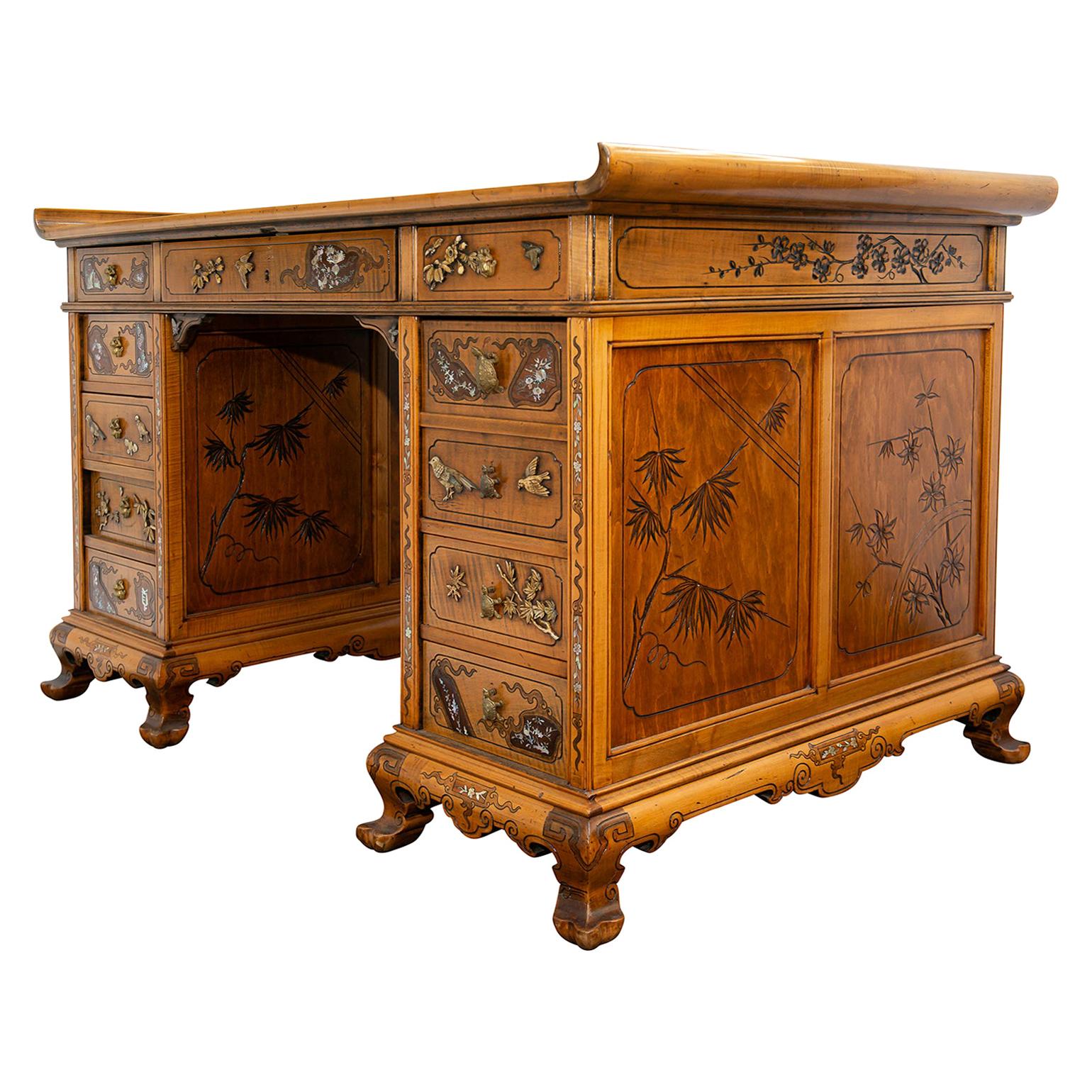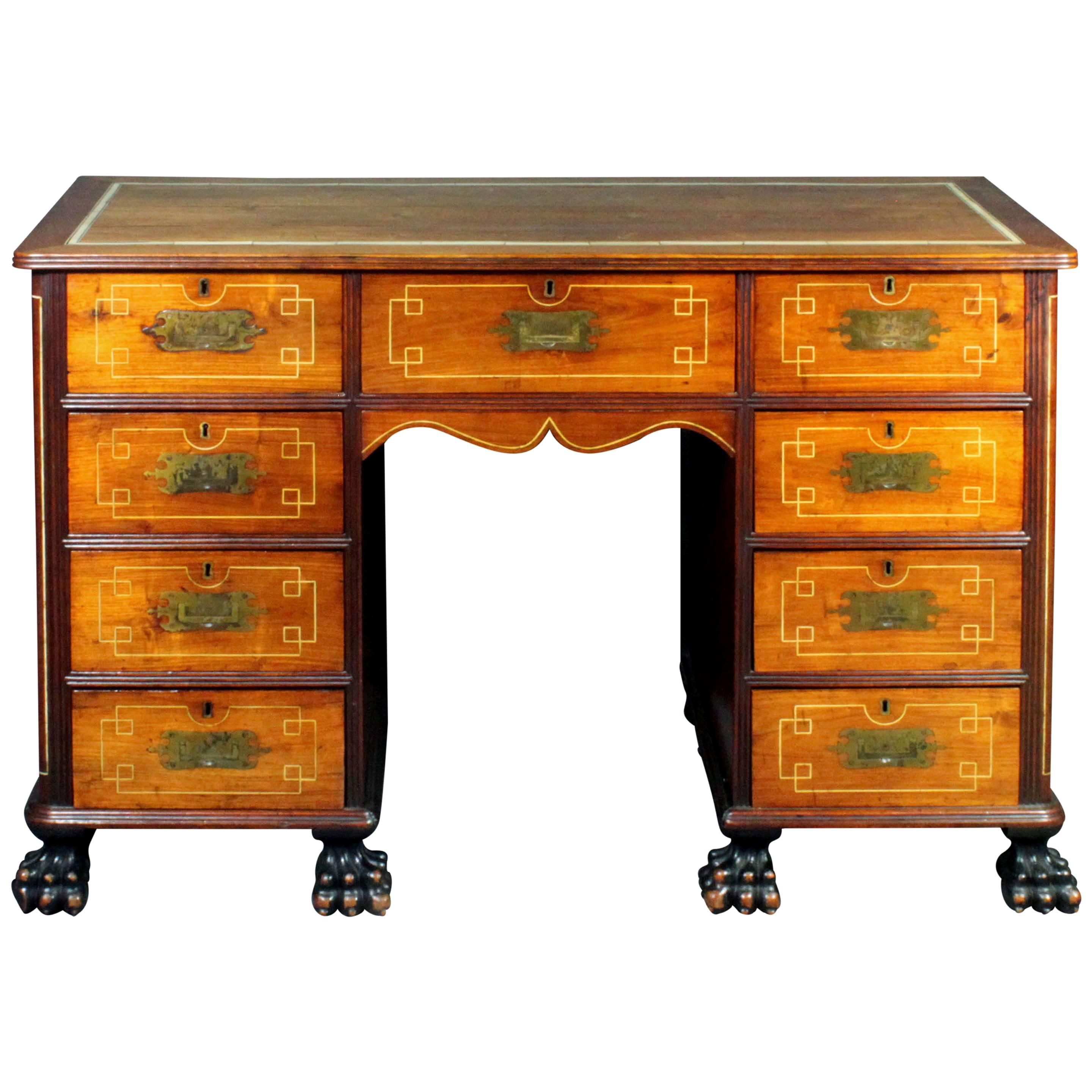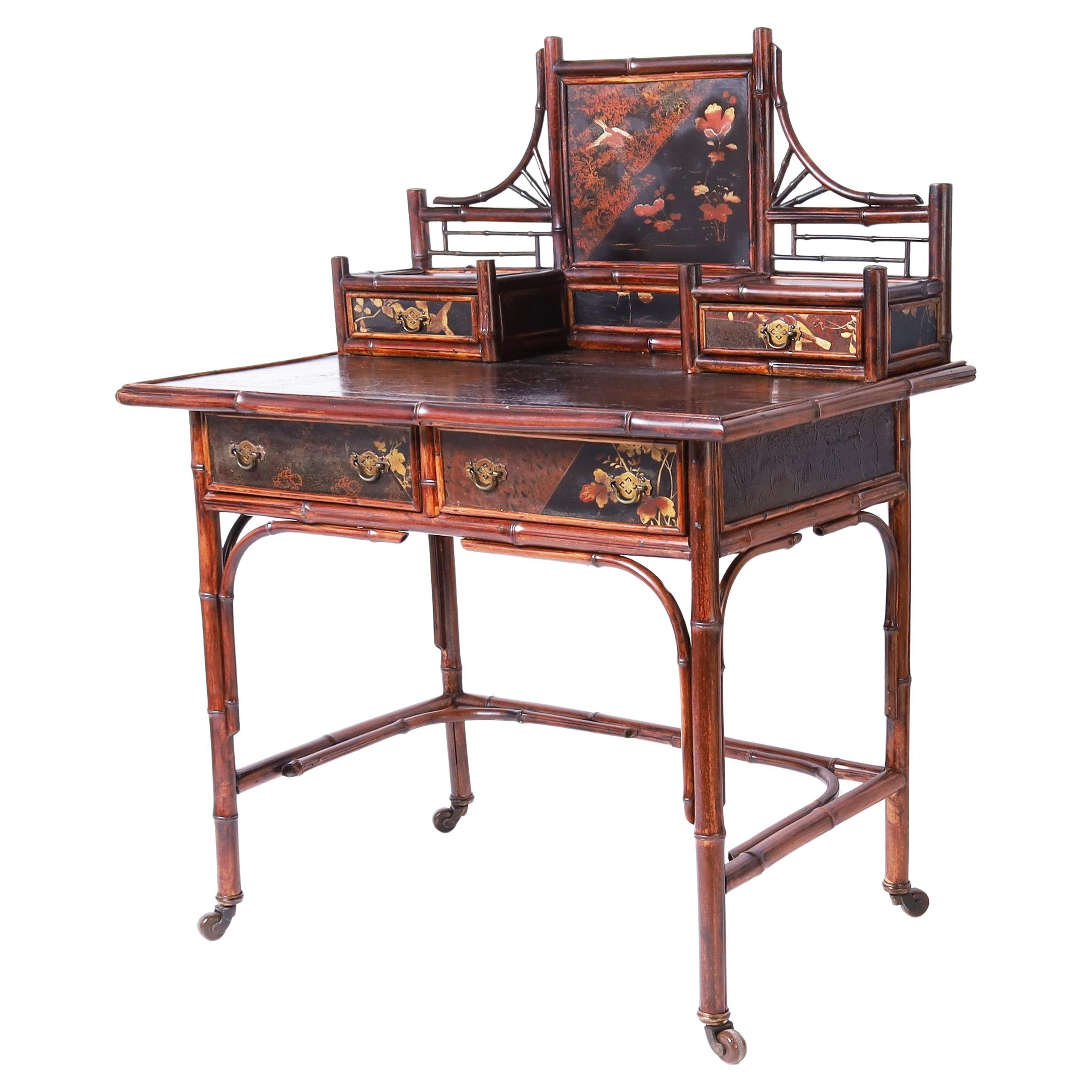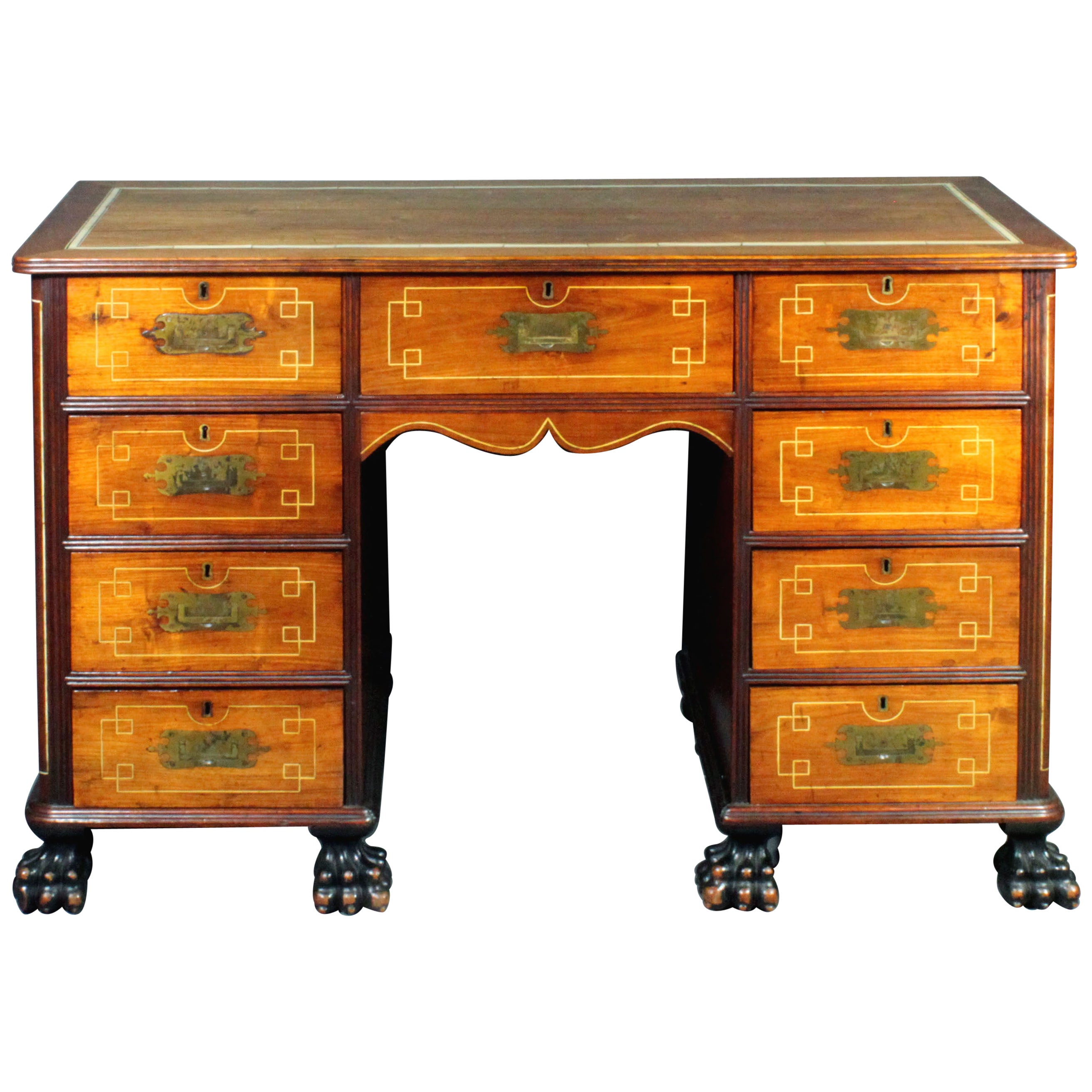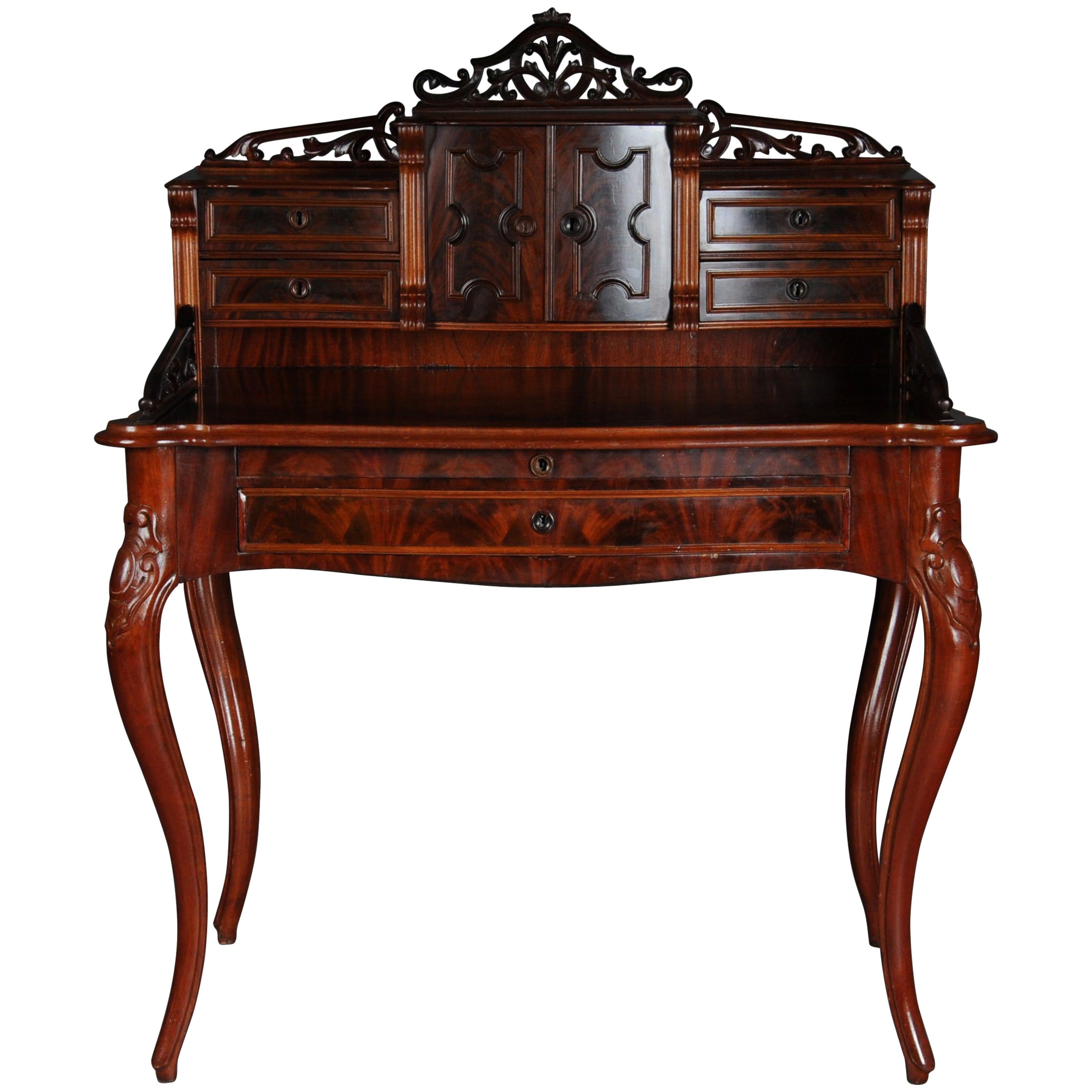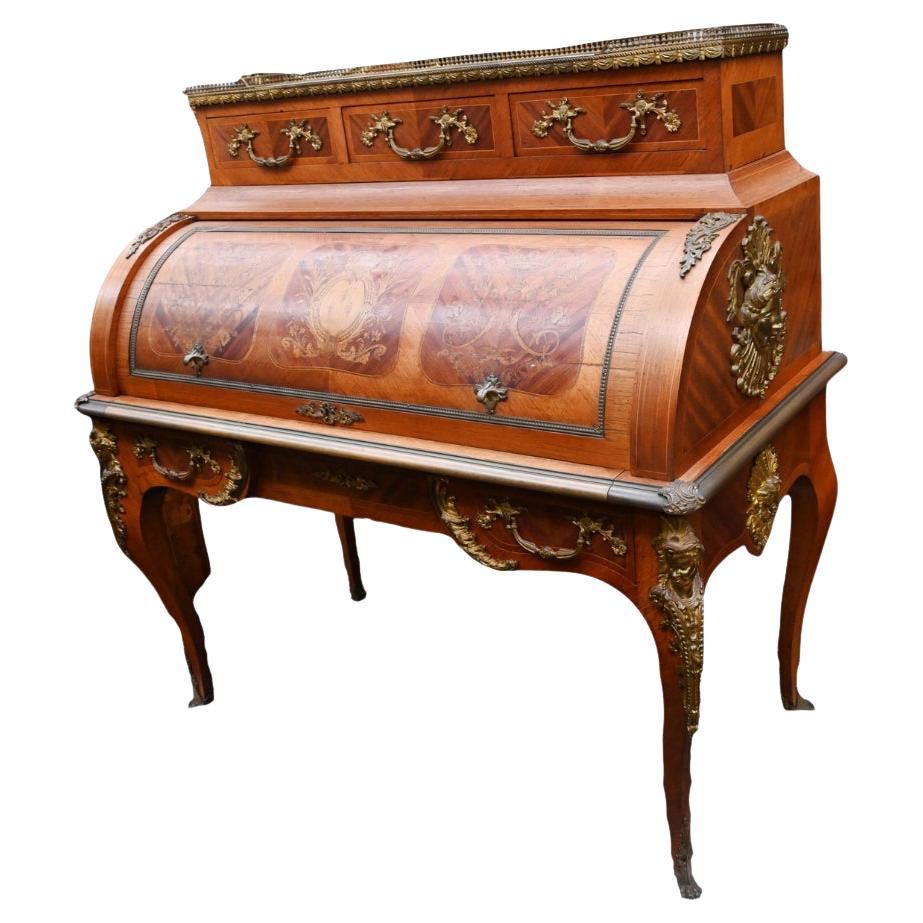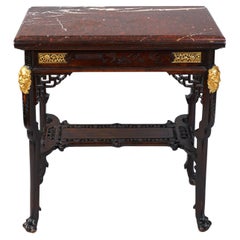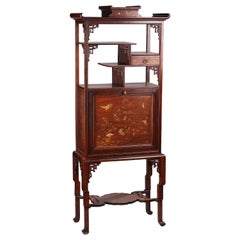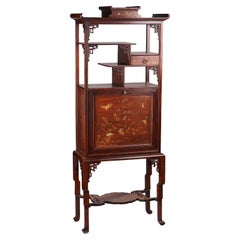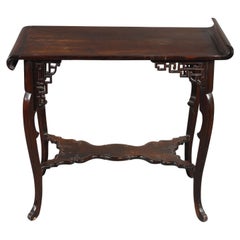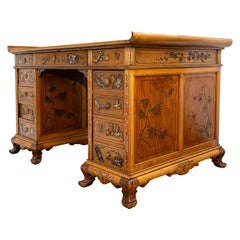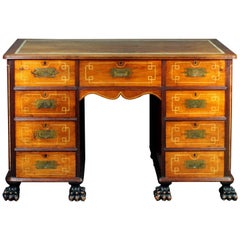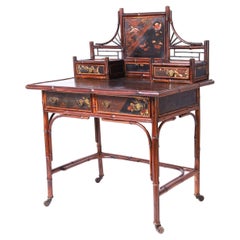Items Similar to "Japonisme" Cylinder Desk Att. to G. Viardot, France, circa 1880
Want more images or videos?
Request additional images or videos from the seller
1 of 11
"Japonisme" Cylinder Desk Att. to G. Viardot, France, circa 1880
$37,939.06
£28,393.29
€32,000
CA$52,340.24
A$58,204.52
CHF 30,570.27
MX$711,608.62
NOK 380,934.90
SEK 359,118.72
DKK 243,599.89
About the Item
Rare Japanese style cylinder desk in tinted and carved wood, richly engraved on all sides with foliage, cherry branches and geometric interlacing. Surmounted by two asymmetrical shelves, the cylinder is decorated with an engraved dragon. Opening this cylinder reveals many compartments with adjustable dimensions, a drawer with engraved decoration and letter storage. The cylinder sides can open laterally, allowing a larger area for working and writing.
The lower part of the desk is formed on the left by five superimposed drawers decorated with geometric interlacing and carved branches, as well as Japanese characters, deer and mother-of-pearl foliage. On the right, there is a drawer and a door decorated with carved leaves and mother-of-pearl interlacing, revealing four drawers forming compartments.
An ingenious mechanism makes it possible, when the cylinder is closed with a key, to completely lock the desk.
Gabriel Viardot career began as a wood carver and he produced small furniture, sculpturally carved with naturalistic motifs and animals. In the 1855 Exposition Universelle in Paris, his finely sculpted objects were well received. However, with the increasing importation of similarly produced Swiss and German articles, he found less opportunity for these and decided to innovate. G. Viardot succeeded to his father’s business in 1861 installed rue Rambuteau in Paris. Around 1870 he turned to the idea of producing « Meubles genre Chinois et Japonais ». The taste in Europe for exotic furniture, incorporating sometimes authentic Chinese or Japanese objects was well established. But Viardot early designed his own models enriched with ivory, mother-of-pearl and beautiful gilt-bronze mounts. After having won four medals at the Paris Universal Exhibition of 1867, Viardot was awarded a silver medal at the 1878 Universal Exhibition in Paris. He was also awarded gold medals several times : Universal Exhibitions in Anvers (Belgium) in 1884, and again in Paris in 1889 and 1900. A contemporary commentator notes that he had a workshop employing approximately 100 men, both sculptors and cabinet-makers with another 25 to 30 outside contract workers. « l’Escalier de Cristal », the famous Parisian offering luxurious furniture got the exclusivity to use their own stamp on six Viardot’s furniture models.
- Attributed to:Gabriel Viardot (Cabinetmaker)
- Dimensions:Height: 53.94 in (137 cm)Width: 52.76 in (134 cm)Depth: 29.14 in (74 cm)
- Style:Japonisme (In the Style Of)
- Materials and Techniques:
- Place of Origin:
- Period:
- Date of Manufacture:circa 1880
- Condition:Wear consistent with age and use.
- Seller Location:PARIS, FR
- Reference Number:Seller: 688/11stDibs: LU3860330406592
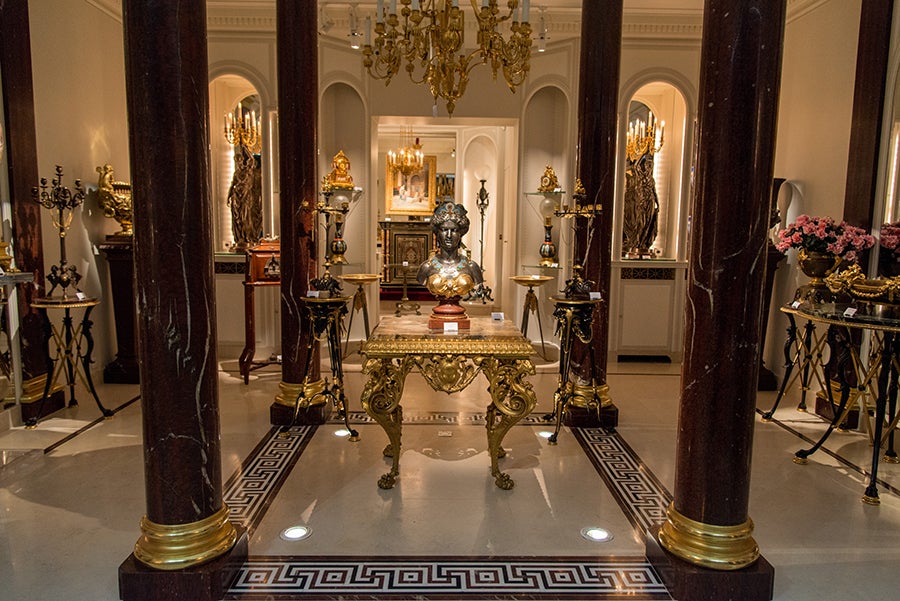
About the Seller
4.9
Vetted Professional Seller
Every seller passes strict standards for authenticity and reliability
Established in 1997
1stDibs seller since 2018
87 sales on 1stDibs
Typical response time: <1 hour
Associations
International Confederation of Art and Antique Dealers' Associations
- ShippingRetrieving quote...Shipping from: Saint Ouen, France
- Return Policy
Authenticity Guarantee
In the unlikely event there’s an issue with an item’s authenticity, contact us within 1 year for a full refund. DetailsMoney-Back Guarantee
If your item is not as described, is damaged in transit, or does not arrive, contact us within 7 days for a full refund. Details24-Hour Cancellation
You have a 24-hour grace period in which to reconsider your purchase, with no questions asked.Vetted Professional Sellers
Our world-class sellers must adhere to strict standards for service and quality, maintaining the integrity of our listings.Price-Match Guarantee
If you find that a seller listed the same item for a lower price elsewhere, we’ll match it.Trusted Global Delivery
Our best-in-class carrier network provides specialized shipping options worldwide, including custom delivery.More From This Seller
View All"Japonisme" Writing-Table by G. Viardot, France, circa 1880
By Gabriel Viardot
Located in PARIS, FR
Beautiful "Japonisme" writing table opening with a belt drawer with engraved decoration of bamboo and flowers and decorated with openwork leafy friezes in bronze, forming a writing tablet covered in velvet.
It rests on four feet mounted at the corners of lion masks in gilded bronze and joined by an openwork spacer, and ending in lion paws. It is topped with a molded Griotte marble.
Biography :
Gabriel Viardot (1830-1906) career began as a wood carver and he produced small furniture, sculpturally carved with naturalistic motifs and animals. In the 1855 Exposition Universelle in Paris, his finely sculpted objects were well received. However, with the increasing importation of similarly produced Swiss and German articles, he found less opportunity for these and decided to inovate. G. Viardot succeded to his father’s business in 1861 installed rue Rambuteau in Paris. Around 1870 he turned to the idea of producing « Meubles genre Chinois et Japonais ». The taste in Europe for exotic furniture...
Category
Antique 1880s French Japonisme Desks and Writing Tables
Materials
Griotte Marble, Bronze
Japanese Style Cabinet-Secretary Attributed to G. Viardot, France, Circa 1880
By Gabriel Viardot
Located in PARIS, FR
A Japanese style carved wood cabinet attributed to G. Viardot. A painted decor imitating Japanese lacquer, ornamented with flowers, birds and butterflies. Opening onto two drawers an...
Category
Antique 1880s French Japonisme Cabinets
Materials
Wood, Paint
Japanese Style Cabinet-Secretary Att. to Perret & Vibert, France, circa 1880
By Perret et Vibert
Located in PARIS, FR
A Japanese style carved wood cabinet, with a painted decor imitating Japanese lacquer, ornamented with flowers, birds and butterflies. Opening onto two drawers and a paper filer, the upright-secretary door is also fitted with red velvet. Surmounted by a drawer and asymmetrical shelves, composed in the Japanese « zen » spirit, the cabinet stands on four legs joined by an engraved stretcher.
The great influence of the Far-East, through China and Japan, in the second half of the 19th century French art could be found first in painting and soon after in decorative arts and furniture as well.
Following the Franco-English military campaign led in 1860 against the Imperial army in China, the French troops of Napoleon III brought back from the Summer Palace, a part of the Chinese Imperial court treasure, which will make up the famous Chinese Museum of Empress Eugénie at the Fontainebleau Palace. The French artists won’t be long to take inspiration from those exotic and sumptuous objects for their creations, as they used to do in the 18th century, when the best French cabinet-makers adapted the Chinese lacquers on the luxurious royal chests.
But the influence of Japan, at the Meiji period (1868-1912), came also very quickly to France, thanks to the opening of the country in the middle of the 19th century, as well as the development of traveling and the amazing Universal Exhibitions, in which Japan participated for the first time in 1867 in Paris. Then many Japanese objects and prints were imported to France and to all Europe, and for which some collectors spent already fortunes.
With Manet and Impressionists generation, the passion for Japanese art, more than a simple taste for an exotic style, was still in fashion until the turn of the 19th century. It provoked not only a craze among the French aristocratic families as well as the wealthy Paris high society, wishing renew their mansion inner decoration, but turned also to a real revolutionary movement among the “avant-garde” artists. Those artists, whoever they were, painters, cabinet-makers or designers of ceramic, bronze and crystal objects, adapted then those techniques and naturalistic motifs unknown until this time.
Christofle, very famous since 1867 as a silversmith, was also one of the leaders among the inventors of Japanism. He knew how to use Japanese elements to his own splendid works made in silver or “cloisonné” enameled bronze. During the 1878 Paris Universal Exhibition, Christofle presented with great success his life-sized bronze Japanese ladies torcheres, executed by the renowned sculptor Guillemin.
Another famous company to be mentioned, is “L’Escalier de Cristal”, producing art objects and furniture, all of high standard quality and innovating much with their Japanese decor. Highly remarked during the Universal Exhibitions, “L’Escalier de Cristal” collaborated with the greatest artists, such Gallé and Rousseau for glass- and ceramic wares, and the cabinet-makers Lièvre and Viardot, whom made furniture including sometimes authentic Japanese elements.
In 1872, Alfred Perret and Ernest Vibert opened in Paris, at 33 rue du Quatre-Septembre a store that offered “natural bamboo furniture and cane seats” and all kinds of textile fittings for furniture. This furniture used for winter gardens and terraces of mansions knew then a resounding success. They developed their business around 1884 with their Japanese style furniture, very close to that executed by Gabriel Viardot (1830-1906). In 1886, the company appearing in the category of “Chinoiserie and Japoneries” offered, in addition to furniture and seating creation, works of art and inlaid furniture directly imported from the Far East ; an activity that expanded rapidly. Their exotic fantasy furniture presented at the Universal Exhibition of Paris in 1889 and 1900, rewarded them two silver medals. In 1894, the company was listed under the name “Perret et Vibert”, headed by the son of Alfred Perret and Ernest Vibert. The same year, they redesigned their store on rue du Quatre-Septembre, creating ten new show-rooms, showing complete furniture sets of Japanese and Chinese style inspiration. It was not until 1895, that the company was finally named “La Maison des Bambous” and organized then in their shops an “exhibition of country furniture and seats for castles and villas”, which was visited by Empress Eugenie to furnish her villa Cyrnos at Cap Martin. She actually was a regular customer of the “Maison des Bambous” as she bought repeatedly furniture. In October of the same year, the king of Greece...
Category
Antique 1880s French Japonisme Secretaires
Materials
Wood
"Pagoda" table, Attributed to G. Viardot, France, Circa 1880
By Gabriel Viardot
Located in PARIS, FR
Charming Japanese-inspired « pagoda » table in tinted and carved wood attributed to G. Viardot. The rectangular top rests on four slightly curved legs adorned with openwork and sculpted geometric interlacing, joined by an engraved stretcher with a stylized cutout.
Gabriel Viardot career began as a wood carver and he produced small furniture, sculpturally carved with naturalistic motifs and animals. In the 1855 Universal Exhibition in Paris, his finely sculpted objects were well received. However, with the increasing importation of similarly produced Swiss and German articles, he found less opportunity for these and decided to innovate. G. Viardot succeeded to his father's business in 1861 installed rue Rambuteau in Paris. Around 1870 he turned to the idea of producing « Meubles genre Chinois et Japonais ». The taste in Europe for exotic furniture, incorporating sometimes authentic Chinese or Japanese objects...
Category
Antique 1880s French Japonisme Tables
Materials
Wood
Beautiful Louis XVI Style Writing Table, France, Circa 1880
Located in PARIS, FR
Beautiful Louis XVI style wooden writing table. The rectangular top, surrounded on three sides by a fine pierced and gilt-bronze frieze, above a d...
Category
Antique 1880s French Louis XVI Desks and Writing Tables
Materials
Bronze
Exceptionel Bookcase Forming Desk, by G. Grohé, France, Circa 1860
By Guillaume Grohe
Located in PARIS, FR
Exceptional neo Renaissance bookcase forming desk. This monumental piece consists in a lower part forming drop-front desk supported by two pillars with drawers. The lateral parts each open with a moulded door. The bookcase occupies the upper part, opening by four windows...
Category
Antique 1860s French Renaissance Bookcases
Materials
Wood
You May Also Like
Japanned 19th Century Pedestal Desk, Attributed to Viardot
By Gabriel Viardot
Located in Brighton, Sussex
A wonderfully stylized Japanned partners pedestal desk, having carved, inlaid and engraved classical decoration, an inset leather top, eleven drawers to one side, each with brass turtle handles, the reverse with engraved mother of Pearl inlaid doors, raised on carved cabriole legs.
Attributed to;
Gabriel Viardot (1830-1906) was a famous Parisian cabinetmaker specializing in the production of “Chinese-Japanese genre” furniture in the last third of the 19th century. He started his career as a wood sculptor in 1849, when he sent some naturalistic décor furniture...
Category
Antique 19th Century French Japonisme Desks
Materials
Fruitwood
Antique China Trade Desk
Located in Bradford-on-Avon, Wiltshire
Antique China Trade desk
A fine China Trade desk in padouk with well-carved hairy paw feet and ebony and bone inlay; recessed military handles and carryi...
Category
Antique Mid-19th Century Chinese Chinese Export Desks and Writing Tables
Materials
Padouk
$10,698
Antique English Aesthetics Movement Bamboo and Lacquer Desk
Located in Palm Beach, FL
Impressive 19th century English desk handcrafted in bamboo in a Japonisme form featuring lacquered panels hand decorated with flowers and birds, the original brass hardware, leather ...
Category
Antique 19th Century English Aesthetic Movement Desks
Materials
Bamboo
Antique China Trade Desk
Located in Bradford-on-Avon, Wiltshire
Antique China Trade desk
A fine China Trade desk in padouk with well-carved ebony hairy paw feet and ebony and bone inlay; recessed military handles ...
Category
Antique Mid-19th Century Chinese Chinese Export Desks and Writing Tables
Materials
Padouk
$7,973
19th Century Louis Philippe Essay Desk, circa 1860
Located in Berlin, DE
Solid wood, mahogany veneer. Extendable cover plate. Decorated tower crowning. Top with four drawers and a cupboard in the center. Everything lockable.
(L-131).
Category
Antique 19th Century French Louis Philippe Desks and Writing Tables
Materials
Mahogany
French Empire Roll Top Desk Bureau De Roi 1860
Located in Potters Bar, GB
You are viewing a gorgeous French Empire roll top desk
Hand crafted from kingwood we date this to circa 1860
Top opens up to reveal leather writin...
Category
Antique 1860s Empire Desks
Materials
Wood
More Ways To Browse
Exoticism Furniture
Exotic Furniture
Antique Cylinder
Japanese Desk Desk
French Contemporary Desk
French Japonisme
Antique Chinese Desk
Antique Desk Drawer Lock
Exotic Wood Desk
Used Cherry Desk
Japanese Wood Desk
Chinese Wood Desk
Antique Japanese Desk
French Wood Carved Animals
Belgian Writing Desk
Asymmetrical Desk
Writing Desks Cherry
Japanese Writing Desk
